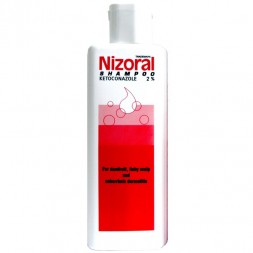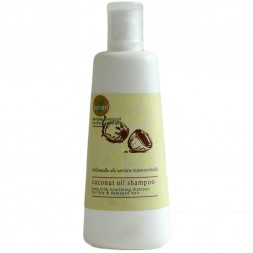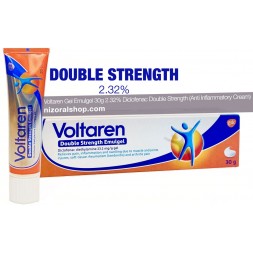Athlete's foot is a fungal infection that affects the skin on the feet. It is a common condition that affects athletes, hence the name, but anyone can get it. The condition is characterized by dry, scaly, and itchy skin, and it can be uncomfortable and embarrassing. In this article, we will discuss the causes, symptoms, and treatments for athlete's foot, as well as how to prevent the condition from occurring in the first place.
Causes of Athlete's Foot
Athlete's foot is caused by a type of fungus known as dermatophytes. These fungi thrive in warm, moist environments, such as locker rooms, public showers, and swimming pools. When you come into contact with these fungi, they can enter your skin through small cuts or openings. This can lead to an infection that can be difficult to get rid of.
Symptoms of Athlete's Foot
The symptoms of athlete's foot can vary from person to person, but they typically include dry, scaly, and itchy skin on the feet. The affected skin may also be red and inflamed, and it may peel or crack. In severe cases, blisters may develop that can be painful and may ooze or become infected.
Treatments for Athlete's Foot
Fortunately, there are many treatments available for athlete's foot. The most common treatments include:
1. Antifungal Medications
Antifungal medications are the most common treatment for athlete's foot. These medications come in the form of creams, powders, or sprays, and they work by killing the fungus that is causing the infection. Some common antifungal medications include Ketoconazole, miconazole, clotrimazole, and terbinafine.
While there are several treatment options available for athlete's foot, one of the most effective is Nizoral Cream. Nizoral Cream is an antifungal medication that is specifically designed to treat athlete's foot and other fungal skin infections. It contains ketoconazole, a powerful antifungal agent that helps to kill the fungus responsible for causing the infection.
If you are suffering from athlete's foot, it is essential to seek treatment as soon as possible to prevent the infection from spreading and causing further discomfort. Here are some tips on how to effectively treat athlete's foot using Nizoral Cream:
- Keep your feet clean and dry: One of the most important steps in treating athlete's foot is to keep your feet clean and dry. Wash your feet regularly with soap and water and dry them thoroughly after bathing or showering. Avoid wearing damp or wet socks and shoes as these can provide an ideal environment for the fungus to thrive.
- Apply Nizoral Cream: Nizoral Cream should be applied to the affected area of your foot at least once a day. Be sure to follow the instructions provided by your doctor or pharmacist, as the dosage and frequency of use may vary depending on the severity of your infection.
- Wear clean socks and shoes: To prevent the spread of the infection and to aid in the healing process, it is essential to wear clean socks and shoes. Be sure to wash your socks and shoes regularly and avoid sharing footwear with others.
- Follow your treatment plan: It is important to follow your treatment plan carefully to ensure that your infection is properly treated. Be sure to continue using Nizoral Cream for the duration of your treatment, even if your symptoms improve before the end of the treatment period.
2. Topical Steroids
Topical steroids are often used in combination with antifungal medications to reduce inflammation and relieve itching. These medications come in the form of creams or ointments, and they work by reducing the body's immune response to the fungus.
3. Home Remedies
There are also many home remedies that can be used to treat athlete's foot. Some of the most popular remedies include:
▶️ Soaking the feet in a solution of water and vinegar▶️ Applying tea tree oil to the affected area
▶️ Using a mixture of baking soda and water as a foot soak
While these home remedies may provide some relief, it is important to note that they are not as effective as antifungal medications and may not be enough to completely cure the infection.
Prevention of Athlete's Foot
The best way to prevent athlete's foot is to practice good foot hygiene. This includes:
- Keeping the feet clean and dry
- Wearing clean socks and shoes
- Avoiding walking barefoot in public places
- Using antifungal powders or sprays on the feet and in shoes
- Changing socks and shoes frequently
By following these simple steps, you can greatly reduce your risk of developing athlete's foot.
Conclusion
Athlete's foot is a common and uncomfortable condition that affects many people. Fortunately, there are many treatments available that can help to alleviate the symptoms and cure the infection. By practicing good foot hygiene and taking steps to prevent the condition from occurring in the first place, you can keep your feet healthy and happy.
FAQs
-
Is athlete's foot contagious?
Yes, athlete's foot is contagious and can be easily spread through contact with infected skin or surfaces.
-
Can athlete's foot be cured?
Yes, athlete's foot can be cured with the use of antifungal medications and good foot hygiene.
-
How long does it take to cure athlete's foot?
The length of time it takes to cure athlete's foot can vary depending on the severity of the infection and the effectiveness of the treatment. In general, most cases of athlete's foot can be cured within a few weeks of starting treatment.
-
Can I prevent athlete's foot from recurring?
Yes, you can prevent athlete's foot from recurring by practicing good foot hygiene and taking steps to avoid contact with the fungus that causes the infection.
-
What should I do if my athlete's foot does not improve with treatment?
If your athlete's foot does not improve with treatment, it is important to see a doctor. They may prescribe a stronger medication or recommend additional treatments to help clear the infection.
A faster treatment may consist in using Ketoconazole Cream (read more), a topical antifungal solution created to disrupt the fungal development and eradicate living yeasts. Nizoral Cream is recommended because of its main ingredient, Ketoconazole 2%. Find out more how Nizoral Cream can cure fungal infectiion on face.
Check out our last news: Seborrheic Dermatitis
Related article that may interest you: How To Prevent Dandruff?
Always seek the advice of your physician or other qualified health provider with any questions you may have regarding a medical condition. The material appearing on this page is for informational use only. It should not be used as a substitute for professional medical advice, diagnosis or treatment.





